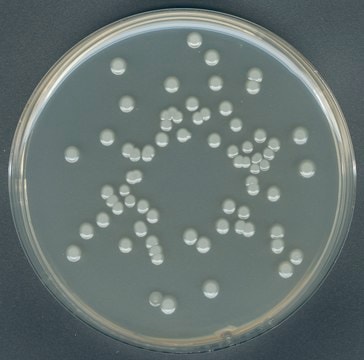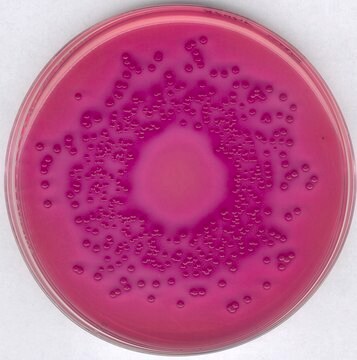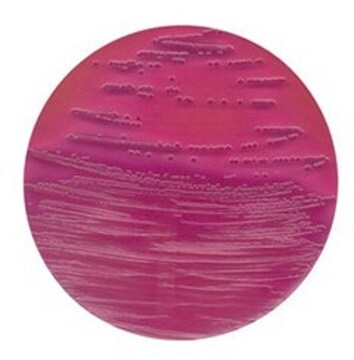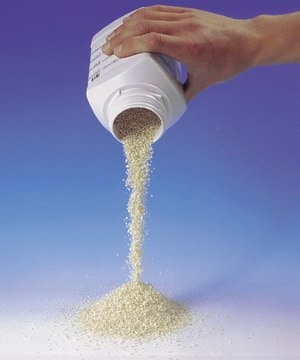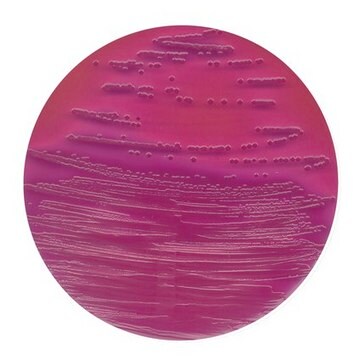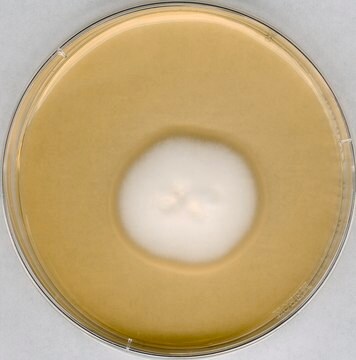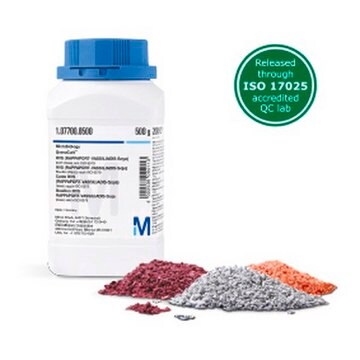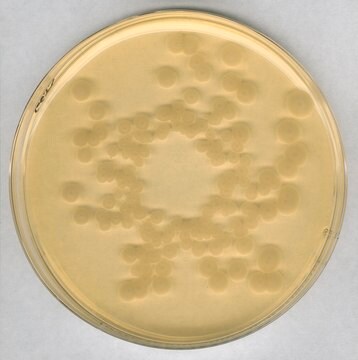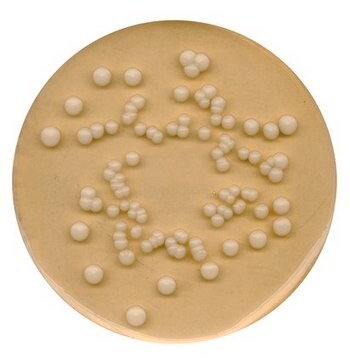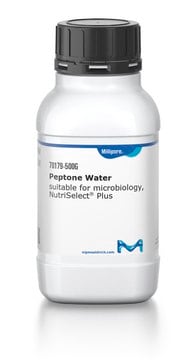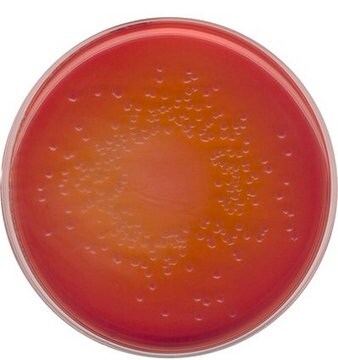1.01406
GranuCult® prime Violet Red Bile Lactose (VBRL) agar
acc. ISO 4832 and FDA-BAM GranuCult , ISO 4832, FDA-BAM
Synonym(s):
Coliform detection media, Crystal Violet Neutral red Bile Lactose agar, Crystal-violet neutral red bile agar, Crystal-violet neutral red bile agar, VRB-agar (Crystal-violet neutral-red bile agar), VBRL agar, VRB agar, VRB-agar (Crystal-violet neutral-red bile agar), Violet Red Bile Lactose agar, Violet Red Bile agar
About This Item
Recommended Products
agency
APHA
FDA-BAM
ISO 4832
Quality Level
sterility
non-sterile
form
granular
packaging
pkg of 5 kg
pkg of 500 g
manufacturer/tradename
GranuCult® prime
storage condition
protect from light (Keep tightly closed and dry)
technique(s)
microbiological culture: suitable
color
pink
pH
7.3-7.5 (37 °C, 40 g/L in H2O, after autoclaving)
solubility
39.5 g/L
bulk density
670 kg/m3
application(s)
food and beverages
microbiology
storage temp.
15-25°C
suitability
coliforms
Related Categories
General description
Application
Features and Benefits
- GranuCult® offers superior granulated culture media
- Safe and sustainable due to reduced risks associated with fine dust and toxic substance inhalation, resulting in a safer work environment
- Excellent wettability, solubility, and free-flowing properties
- Convenient, with minimal component separation and clumping, even under warm or humid conditions
- High batch-to-batch reproducibility
- Prolonged shelf life of up to five years
- High number of test strains exceeding all regulatory demands
- Granulation technology allowS many supplements to be included, with no need to add these separately
Linkage
Analysis Note
Appearance (colour): red
pH-value (25 °C): 7.2 - 7.6
Solidification behaviour (2 hrs., 45 °C): liquid
Growth promotion test in accordance with the current version of DIN EN ISO 11133.
Inoculum on reference medium (Escherichia coli ATCC 8739 (WDCM 00012)):
Colony count (Escherichia coli ATCC 8739 (WDCM 00012)):
Recovery on test medium (Escherichia coli ATCC 8739 (WDCM 00012)): ≥ 50 %
Colony colour (Escherichia coli ATCC 8739 (WDCM 00012)): purplish-red colonies with or without precipitate halo
Inoculum on reference medium (Escherichia coli ATCC 25922 (WDCM 00013)):
Colony count (Escherichia coli ATCC 25922 (WDCM 00013)):
Recovery on test medium (Escherichia coli ATCC 25922 (WDCM 00013)): ≥ 50 %
Colony colour (Escherichia coli ATCC 25922 (WDCM 00013)): purplish-red colonies with or without precipitate halo
Inoculum on reference medium (Enterobacter cloacae ATCC 13047 (WDCM 00083)):
Colony count (Enterobacter cloacae ATCC 13047 (WDCM 00083)):
Recovery on test medium (Enterobacter cloacae ATCC 13047 (WDCM 00083)): ≥ 50 %
Colony colour (Enterobacter cloacae ATCC 13047 (WDCM 00083)): purplish-red colonies with or without precipitate halo
Growth (Pseudomonas aeruginosa ATCC 27853 (WDCM 00025)): no limit
Colony colour (Pseudomonas aeruginosa ATCC 27853 (WDCM 00025)): colourless to beige colonies
Growth (Enterococcus faecalis ATCC 19433 (WDCM 00009)): total inhibition
Growth (Enterococcus faecalis ATCC 29212 (WDCM 00087)): total inhibition
Incubation: 24 ± 2 hours at 30 ± 1 °C
Reference media: Tryptic Soy Agar
A recovery rate of 50 % is equivalent to a productivity value of 0.5.
The indicated colony counts result from the sum of a triple determination.
Other Notes
- The prepared medium is clear and red
- If the medium is to be used immediately for the poured plate technique, cool it to 44-47 °C in a water bath before use
- If the medium is used for the surface plating technique, there should be no visible moisture on the plates before use
- The prepared plates can be stored at 2 °C to 8 °C in the dark and protected against evaporation for up to 5 days
Legal Information
Disclaimer
Related product
Storage Class
11 - Combustible Solids
wgk_germany
WGK 3
Certificates of Analysis (COA)
Search for Certificates of Analysis (COA) by entering the products Lot/Batch Number. Lot and Batch Numbers can be found on a product’s label following the words ‘Lot’ or ‘Batch’.
Already Own This Product?
Find documentation for the products that you have recently purchased in the Document Library.
Customers Also Viewed
Articles
See how two water sources compare when preparing and performance testing microbiological culture media acc. to EN ISO 11133: centrally purified water vs. water from a Milli-Q® IX system were assessed. Tests included media specific for Listeria and Salmonella pathogens.
Our team of scientists has experience in all areas of research including Life Science, Material Science, Chemical Synthesis, Chromatography, Analytical and many others.
Contact Technical Service